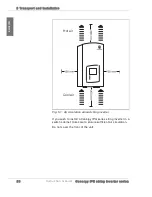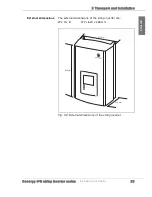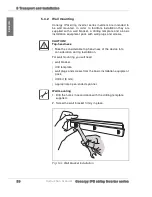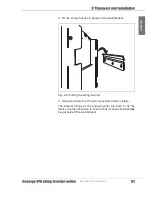
18
In st ru c t io n m an u al
C o n e r g y IP G s t r in g in v e r t e r s e r ie s
3 P r o d u c t d e s c r ip t io n
E
N
G
L
IS
H
M onitoring of the public
grid
For safety reasons, each photovoltaic system must be
disconnected from the public power grid in various
circumstances:
| In the case of disconnection or failure of the electricity grid
| In the case of electricity grid faults such as voltage
fluctuations, fault currents or frequency changes
The grid monitoring must be carried out via an independent,
automatic disconnect point or a switch point with disconnect
function, accessible at all times for the utilities. The permitted
type of automatic disconnection depends on the regulations
of the individual countries.
Inverters of the Conergy IPG string inverter series monitor the
grid using the phase-shifting process.
Phase Shifting
If there is a fault of the public power grid, each string inverter
of the Conergy IPG series detects this fault on the basis of
the change in frequency of the current.
The frequency of the public grid is at 50 Hz (nominal
frequency). The digital control system of the string inverters
of the Conergy IPG series ensures that the inverter
continuously seeks to increase the input frequency. As long
as the public grid (with nominal frequency 50 Hz) is present,
the inverter cannot increase the input frequency. In the case
of a power outage, the frequency changes, as in this case the
inverter is in a position to increase the input frequency. The
frequency change is monitored by the inverter. It reads a
deviation from 50 Hz as an indication that the public grid is
not available, and automatically disconnects.






























